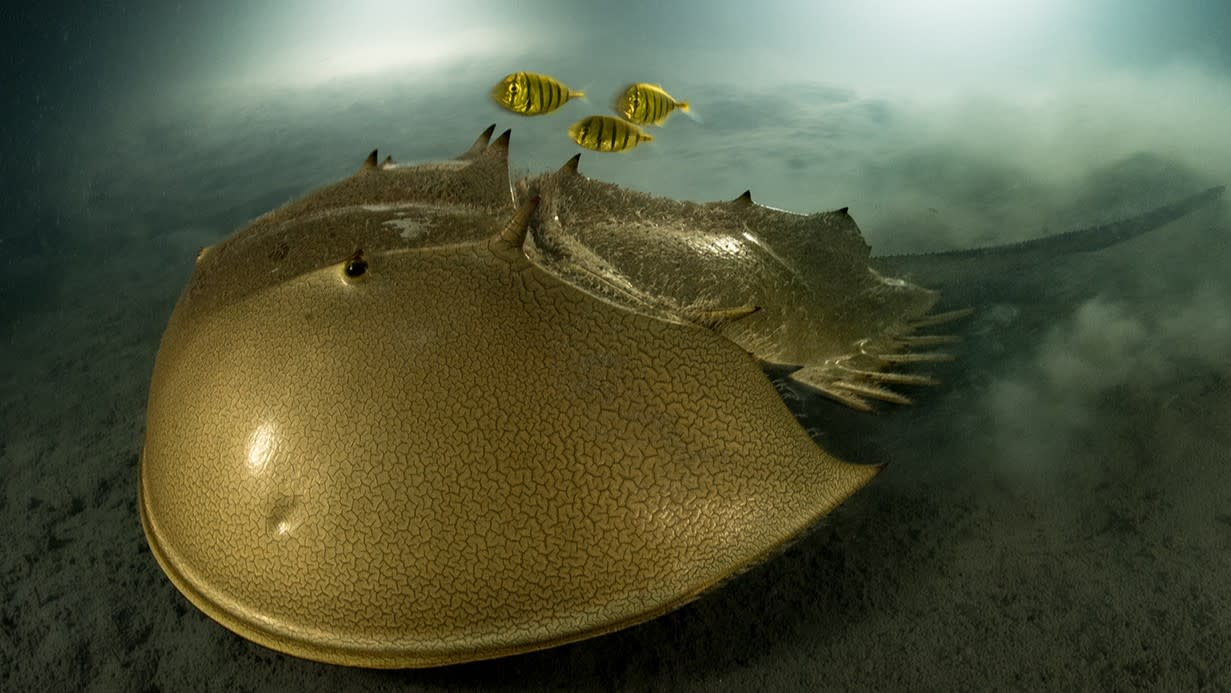'Hauntingly beautiful' image of a golden horseshoe crab wins wildlife photography competition


A stunning image of a golden horseshoe crab shuffling along the seabed with three striped fish overhead has won this year's Wildlife Photographer of the Year competition.
Laurent Ballesta, a French underwater photographer and marine biologist, captured the striking scene in the protected waters of Pangatalan Island in the Philippines, a refuge for endangered tri-spine horseshoe crabs (Tachypleus tridentatus).
These horseshoe crabs have existed for more than 100 million years, award representatives said in a statement shared with Live Science, but they now face habitat destruction and dwindling food due to overfishing. Humans also harvest them for their unique blue blood, which is used in the development of vaccines.
"To see a horseshoe crab so vibrantly alive in its natural habitat, in such a hauntingly beautiful way, was astonishing," Kathy Moran, chair of the jury for the competition, said in the statement. "We are looking at an ancient species, highly endangered, and also critical to human health. This photo is luminescent."
Related: Why do animals keep evolving into crabs?
The three juvenile golden trevallies (Gnathanodon speciosus) hovering over the horseshoe crab were probably there to pick off any edible treats plowed up by the crab's slow advance, according to the statement.
The jury selected Ballesta's photo, titled "The golden horseshoe," from among almost 50,000 entries from 95 countries. Another 18 winners received prizes for showcasing the rich diversity of life on Earth.
"Whilst inspiring absolute awe and wonder, this year's winning images present compelling evidence of our impact on nature — both positive and negative," Doug Gurr, director of the Natural History Museum, which stages the competition, said in the statement.
RELATED STORIES
—Hoff crab: The hairy-chested crustacean that farms bacteria on its hairs
—Pom pom crab: The crustacean that uses anemones as boxing gloves
—Watch cannibal crab gobble up baby crablets in Australia in David Attenborough's 'Our Planet II'
The winning images will be on display in the "Wildlife Photographer of the Year" exhibition at the Natural History Museum in London from Friday, Oct. 13 until June 30, 2024.
This isn't the first time Ballesta has received the Wildlife Photographer of the Year award. In 2021, he received the top prize for his photograph of camouflage groupers (Epinephelus polyphekadion) swimming in a milky cloud of eggs and sperm in Fakarava, French Polynesia, in the South Pacific Ocean.
If you want to try your hand at capturing the wonders of nature, check out our beginner's guide to wildlife photography and our pick of the best wildlife photography cameras.

